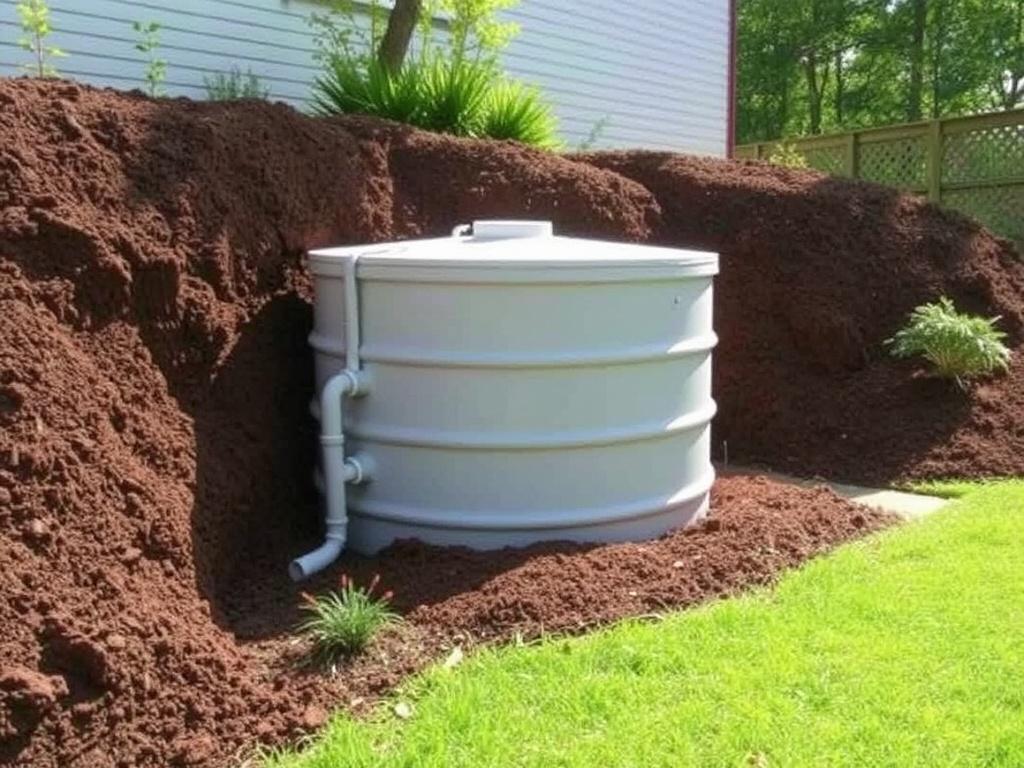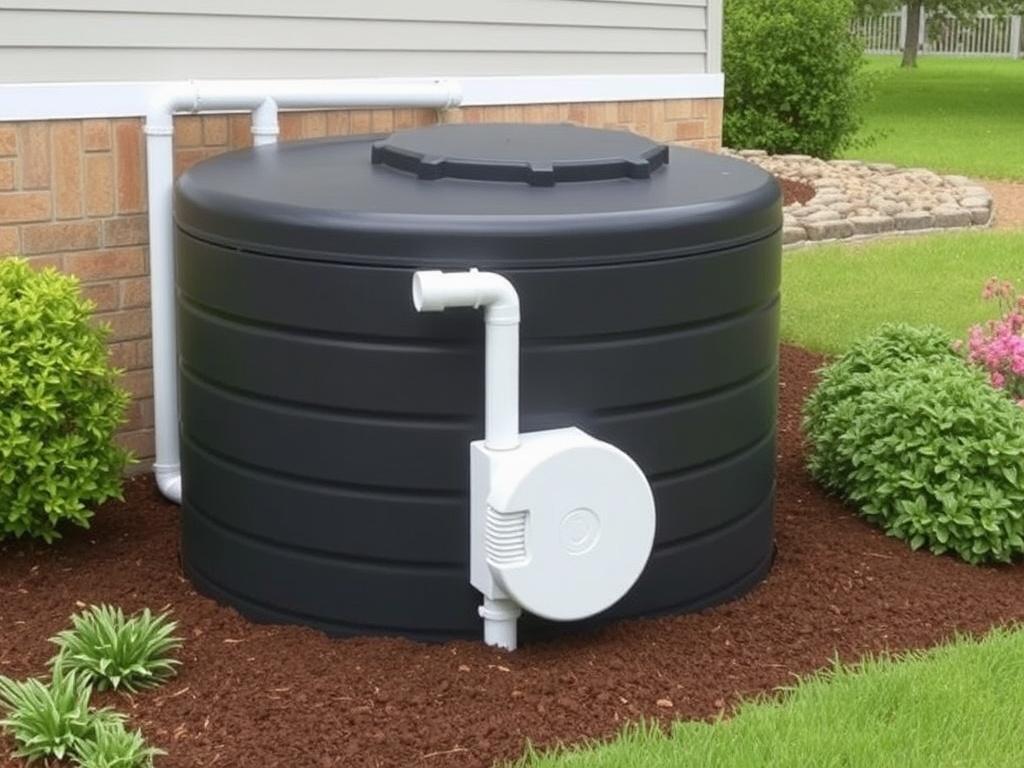Calculating the right septic tank capacity is essential for ensuring your wastewater system functions efficiently and lasts for many years. Whether you’re installing a new septic system or upgrading an existing one, understanding how to calculate septic tank capacity can save you time, money, and a lot of headaches down the road. In this article, we will walk through the process in detail, explaining everything from what factors influence septic tank size to practical formulas and guidelines. By the end, you’ll have a clear grasp of how to calculate septic tank capacity and make informed decisions that suit your home or property needs.
- Understanding the Importance of Septic Tank Capacity
- Key Factors Affecting Septic Tank Capacity
- Household Size and Number of Bedrooms
- Average Daily Water Usage
- Local Regulations and Codes
- Soil and Drain Field Characteristics
- Step-by-Step Guide on How to Calculate Septic Tank Capacity
- Step 1: Determine Average Daily Water Usage
- Step 2: Estimate Retention Time
- Step 3: Calculate Required Capacity
- Step 4: Account for Additional Factors
- Step 5: Match With Standard Tank Sizes
- Common Septic Tank Sizes and Their Typical Uses
- Additional Tips for Calculating Septic Tank Capacity
- Consider Future Expansion
- Consult Local Health Department Guidelines
- Think About Household Water Efficiency
- Include Additives and Garbage Disposal Usage
- Calculating Septic Tank Capacity: Formulas and Examples
- Example 1: Small Household
- Example 2: Larger Household With Garbage Disposal
- Common Mistakes to Avoid When Calculating Septic Tank Capacity
- Underestimating Household Water Usage
- Ignoring Local Codes
- Failing to Allow for Solids Buildup
- Overlooking Future Growth
- Maintenance and Longevity Related to Proper Tank Capacity
- When to Consult a Professional
- Summary Table: Steps to Calculate Septic Tank Capacity
- How to Calculate Septic Tank Capacity: Final Thoughts
- Conclusion
Understanding the Importance of Septic Tank Capacity
Before diving into calculations, it’s helpful to know why septic tank capacity matters. A septic tank serves as the primary treatment system for your household wastewater, collecting and beginning the treatment process for everything flushed down your toilets, sinks, and drains. If the tank is too small, it will fill up quickly, causing wastewater to back up or lead to system failure. On the other hand, an oversized tank can mean unnecessary expense and wasted space. Thus, calculating the correct septic tank capacity ensures your system operates smoothly, protects the environment, and complies with local regulations.
There are several factors that influence the proper septic tank size, including the number of bedrooms in your home, estimated daily water usage, and the soil absorption capacity around the drain field. Understanding these factors is key to accurately determining how to calculate septic tank capacity.
Key Factors Affecting Septic Tank Capacity
Household Size and Number of Bedrooms
The size of your household is probably the most direct factor affecting your septic tank capacity. More residents mean more wastewater generated every day, which requires a larger tank. Many local codes use the number of bedrooms as a proxy for household size because bedroom count generally correlates with occupancy.
Average Daily Water Usage
Water consumption significantly influences the volume of waste entering the septic tank. This volume is often measured in gallons per day (GPD). The average person typically produces about 50 to 70 gallons of wastewater daily, depending on lifestyle and appliance efficiency. Combining this figure with household size gives a clearer picture of daily load.
Local Regulations and Codes
Regulatory authorities set minimum requirements for septic tank sizes based on health and environmental considerations. These rules often depend on both household size and water usage, but they can vary widely between states, counties, and municipalities. Always check your local regulations before finalizing any septic tank calculations.
Soil and Drain Field Characteristics
While soil type and drain field size don’t directly affect the septic tank’s physical capacity, they impact how quickly wastewater is absorbed and treated once it leaves the tank. If your soil absorbs water slowly or has poor drainage, your system might require additional treatment or a larger tank to compensate.
Step-by-Step Guide on How to Calculate Septic Tank Capacity
Now that we understand the main influences, it’s time to learn how to calculate septic tank capacity step by step:
Step 1: Determine Average Daily Water Usage
Estimate the total quantity of wastewater produced daily by your household. You can approximate this by multiplying the number of occupants by an average usage rate.
- Average person’s wastewater output: 60 gallons/day (variable from 50-70)
- Number of residents in the household: e.g., 4
For example, 4 residents x 60 gallons = 240 gallons/day
Step 2: Estimate Retention Time
Septic tanks are designed to hold wastewater long enough for solids to settle and scum to form on top. The typical recommended retention time ranges from 24 to 48 hours. For calculation purposes, we’ll use 48 hours (2 days) since longer retention ensures better treatment.
Step 3: Calculate Required Capacity
Multiply your daily water usage by the retention time to get the tank volume:
Tank Capacity (gallons) = Daily Wastewater Volume (gallons/day) × Retention Time (days)
Using our example: 240 gallons/day × 2 days = 480 gallons
Step 4: Account for Additional Factors
Experts recommend adding extra capacity to accommodate solids buildup and potential water surges, especially in homes with guests or heavy water usage. Typically, adding 25% to 50% extra volume is advised.
Calculations:
480 gallons + 25% (120 gallons) = 600 gallons
Or for 50% extra: 480 gallons + 240 gallons = 720 gallons
Step 5: Match With Standard Tank Sizes
Septic tanks are commonly available in standard sizes such as 500, 750, 1000, and 1250 gallons. Based on the above, you should choose the smallest standard size larger than your calculated volume to ensure adequate capacity.
In our example, a 600-gallon calculation means the septic tank size should be at least 750 gallons.
Common Septic Tank Sizes and Their Typical Uses
To help you visualize different septic tank capacities, here’s a handy table showing common sizes and the household scenarios they typically suit:
| Tank Size (gallons) | Recommended Household Size | Approximate Daily Wastewater Capacity (gallons) | Typical Uses |
|---|---|---|---|
| 500 | 1-2 Bedrooms (1-3 Persons) | 120-180 | Small cabins, tiny homes, or small households |
| 750 | 3 Bedrooms (3-5 Persons) | 180-300 | Average single-family homes |
| 1000 | 4 Bedrooms (4-6 Persons) | 240-360 | Larger families or homes with frequent guests |
| 1250 | 5+ Bedrooms (6+ Persons) | 300-420+ | Large homes, small commercial buildings |
Additional Tips for Calculating Septic Tank Capacity
Consider Future Expansion
If you anticipate adding bedrooms, bathrooms, or increasing occupancy, it’s wise to select a larger tank than your current needs require. This future proofs your system and avoids costly replacements.
Consult Local Health Department Guidelines
Always reference local guidelines and building codes, as they may prescribe minimum tank sizes or specific formulas for calculating septic tank capacity that differ from general recommendations.
Think About Household Water Efficiency
If your home uses water efficient appliances – such as low-flow toilets, showerheads, and front-loading washing machines – your daily wastewater generation may be lower. This can reduce the required septic tank size.
Include Additives and Garbage Disposal Usage
If your household uses a garbage disposal, it adds solids and increases tank loading. This can require a larger septic tank capacity or more frequent pumping.
Calculating Septic Tank Capacity: Formulas and Examples
To consolidate what you’ve learned, here’s a simple list of formulas and sample calculations based on various scenarios:
- Basic Formula:
Septic Tank Capacity = Average Daily Flow (gallons) × Retention Time (days) - Average Daily Flow Calculation:
Average Daily Flow = Number of Occupants × Average Wastewater per Person (typically 60 gallons) - Retention Time: Typically 1 to 2 days (24-48 hours)
Example 1: Small Household
Number of occupants: 3
Average wastewater per person: 60 gallons/day
Retention time: 2 days
Calculation:
3 × 60 = 180 gallons/day
180 gallons/day × 2 days = 360 gallons
Add 25% for safety:
360 + 90 = 450 gallons → Choose 500-gallon tank
Example 2: Larger Household With Garbage Disposal
Number of occupants: 5
Average wastewater per person: 60 gallons/day + 20% extra for garbage disposal = 72 gallons/day
Retention time: 2 days
Calculation:
5 × 72 = 360 gallons/day
360 × 2 = 720 gallons
Add 25% extra capacity:
720 + 180 = 900 gallons → Choose 1000-gallon tank
Common Mistakes to Avoid When Calculating Septic Tank Capacity

Underestimating Household Water Usage
People often misjudge how much water they use daily, leading to under-sized septic tanks. Be realistic and consider occasional guests, laundry loads, and appliance usage.
Ignoring Local Codes
Skipping local regulations can cause your septic system design to fail inspections or violate codes, which can be costly to fix later.
Failing to Allow for Solids Buildup
Not adding extra volume for sludge and scum accumulation leads to frequent pumping and potential system backups.
Overlooking Future Growth
Installing a septic tank that only meets current needs without anticipating future expansion may require premature tank replacement.
Maintenance and Longevity Related to Proper Tank Capacity
An adequately sized septic tank not only prevents backups but also ensures effective treatment and longevity of your septic system. Regular pumping, typically every 3 to 5 years, is necessary to manage sludge accumulation. If the tank is too small, pumping becomes more frequent, increasing maintenance costs. On the other hand, a correctly sized tank balances treatment time, solids settling, and system health.
When to Consult a Professional
While this guide provides everything needed to calculate septic tank capacity at a basic level, complex scenarios benefit from expert advice. If you are dealing with unusual water usage patterns, commercial properties, or uncertain soil conditions, consider consulting a septic engineer or professional installer. They can provide tailored calculations and system designs that comply with codes and meet your property’s needs effectively.
Summary Table: Steps to Calculate Septic Tank Capacity
| Step | Action | Notes |
|---|---|---|
| 1 | Estimate daily wastewater flow | Number of occupants × average gallons per person |
| 2 | Choose retention time | Usually 1-2 days for solids settling |
| 3 | Calculate tank volume | Water flow × retention time |
| 4 | Add extra buffer volume | 25% to 50% for sludge/scum and surges |
| 5 | Select the nearest standard tank size | Standard sizes: 500, 750, 1000 gallons, etc. |
How to Calculate Septic Tank Capacity: Final Thoughts

Calculating septic tank capacity doesn’t have to be a confusing or intimidating process. By understanding your household’s water usage, selecting the appropriate retention time, and adding an adequate safety margin, you can estimate the size of septic tank that will serve your home effectively. Remember that local regulations and soil conditions play critical roles in the design process, so always begin with checking local codes. Proper septic tank capacity is vital for efficient wastewater treatment, protecting your property, and safeguarding the environment. With the knowledge and step-by-step guidance provided here, you will be well-prepared to calculate septic tank capacity or discuss your needs confidently with a professional installer.
Conclusion

In summary, how to calculate septic tank capacity comes down to understanding your household’s daily water usage, applying retention time, and adding a safety buffer to select the appropriate tank size that aligns with local requirements. Using practical formulas and guidelines ensures that your septic system is neither undersized nor oversized, balancing cost and functionality. Avoid common pitfalls by considering future growth, local codes, and household habits. Maintaining the right septic tank capacity can enhance system performance and longevity while protecting your home and surrounding environment. Whether you’re planning a new installation or upgrading an existing system, these insights will help you make the best decision backed by sound calculations and practical knowledge.
Помогла вам статья?






